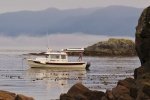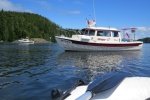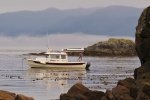While we have our 16' out of the water and cleaning the hull of some barnacle "residue" (thanks to Thataway for his suggestions in an earlier post), we're wondering about ablative bottom paint. Not the up the sides kind of paint, but just on the bottom where we can't get to the hull because of the trailer bunks when we have it out of the water. The PO left it in saltwater too long (about 6 months) - but we've found the "residue" pretty easy to remove where we can get to it. And it won't be left in the water for huge amounts of time in the future.
But in reading about bottom painting, it's suggested at least two coats of epoxy (to a certain mil thickness) before bottom painting. I understand that the epoxy is intended as a less porous barrier to prevent the processes that promote osmotic blistering, but why are the coatings of epoxy only mentioned in terms of bottom painting? Why shouldn't everyone just put two coats of epoxy on the bottom of their boats? Sorry for my ignorance, just would like to understand
I've read a number of articles, this one has been most helpful in understanding the dynamics of osmotic blistering, maybe someone has better references they can refer me to?
https://stevedmarineconsulting.com/wp-content/uploads/2014/03/Blisters-and-Osmosis.pdf
thanks! - Karen
But in reading about bottom painting, it's suggested at least two coats of epoxy (to a certain mil thickness) before bottom painting. I understand that the epoxy is intended as a less porous barrier to prevent the processes that promote osmotic blistering, but why are the coatings of epoxy only mentioned in terms of bottom painting? Why shouldn't everyone just put two coats of epoxy on the bottom of their boats? Sorry for my ignorance, just would like to understand
I've read a number of articles, this one has been most helpful in understanding the dynamics of osmotic blistering, maybe someone has better references they can refer me to?
https://stevedmarineconsulting.com/wp-content/uploads/2014/03/Blisters-and-Osmosis.pdf
thanks! - Karen




